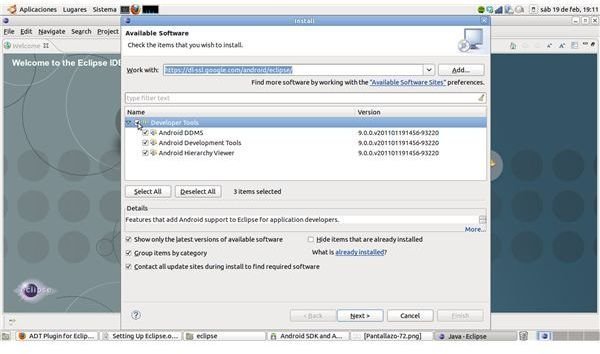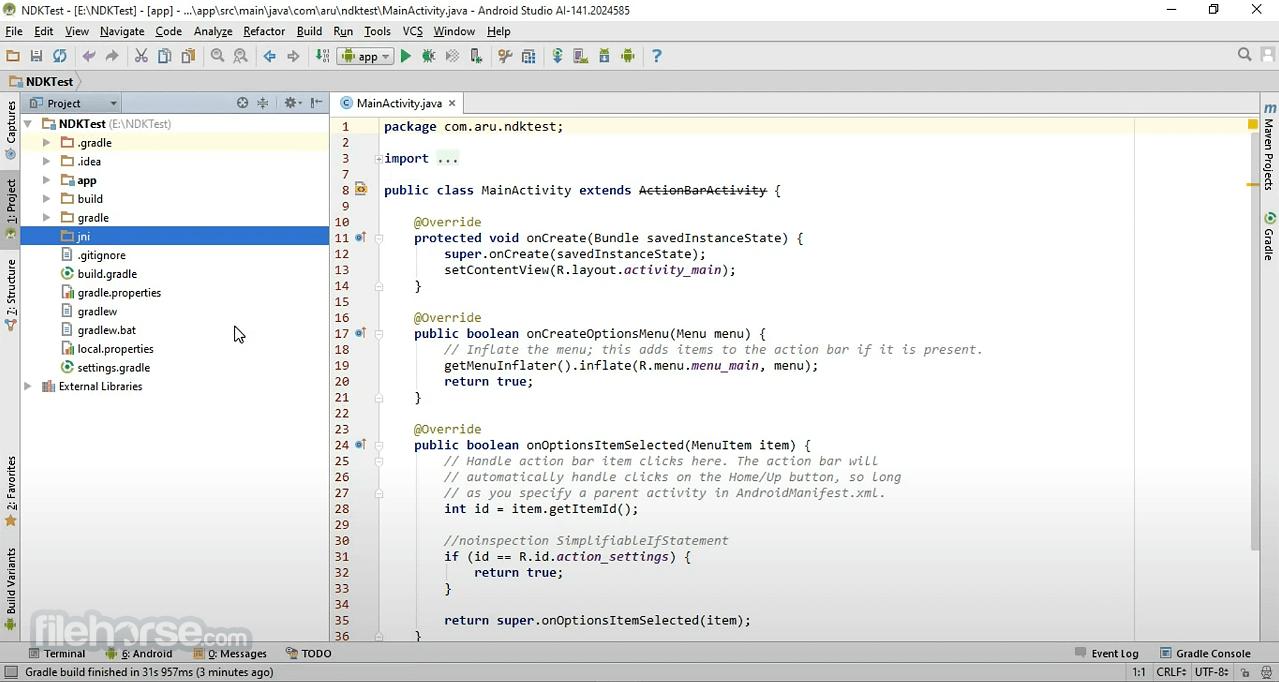

Then extract the NDK to a folder in your computer.
ANDROID NDK ECLIPSE ANDROID
Download the NDK from the Android Development site.

It is assumed that you have the Android SDK already installed. These are the steps in starting work with the NDK. Tess-two uses the Tesseract project and adds the Android Java Native Interface (JNI) to allow compilation for the Android platform, complete in an Eclipse project. We have available the excellent work of Robert Theis with his tess-two project. Below I describe the process however after my component will allow users to have a more direct access to the OCR libraries on their own Android development. However the process of compiling and preparing those libraries is very complex, lengthy and error prone.
ANDROID NDK ECLIPSE CODE
We have the Android Native Development Kit (NDK) that offers the means of utilizing code written in C and or C++ in our Android programming. It contains not only the OCR library, but also the Leptonica Image Processing Library. To add the new builder to the list, select Builders on the left side, and then click the New button. Right-click your Android project, and then choose properties. The issue with this library, is that it is written in C and C++. The first step is to configure the Builders for the project, then select which Builders to enable for the project.

ProguardFiles getDefaultProguardFile('proguard-android.txt'), ' proguard-rules.My project for my Android Components graduate class at FAU (COT6930) was a component to allow programmers better access to the Optical Character Recognition (OCR) package Tesseract maintained by Google. and there will be a point later where keeping control over this is important In the box that appears, select the Name field and type in NDKROOT. In the box that reads Environment variables to set you will have 2 items, CWD and PWD. There is a default directory but I prefer to control which directories to use In the list on the left, click on the arrow next to the item C/C++ Build and highlight the item Environment. Point Gradle at the directory where you want to root all of your native code This will be the name of your library (so: libNdkModule.so) Using the Help->Check for Updates Menu in ECLIPSE and then be sure you have all the things are up to date on the Android SDK Manager. 3- Be sure you have updated to the latest Android SDK and ADT Tools.
ANDROID NDK ECLIPSE HOW TO
I’ll talk about how to include a complex Android.mk file later 2- Start from scratch again by deleting any NDK references such as the settings on eclipse, paths, folders, zips, etc. NOTE: These are used to generate an Android.mk file. These directives will be used to tell Android studio how to compile your library Jint Java_com_sdgsystems_examples_android_ndk_ndkmodule_MainNative_callWithArguments (JNIEnv * env, jobject thiz, jstring deviceName, jint width, jint height ) ĪpplicationId ".ndk.ndkmodule" stick with camelCase moduleNames, classNames and methodNames #include // underscores are reserved characters in JNI referring to package boundaries. Using Eclipse C/C++ Development Toolkit (CDT) in conjunction with Android Native Development Kit (NDK) to integrate, develop and troubleshoot native Android. Jint Java_com_sdgsystems_examples_android_ndk_ndkmodule_MainNative_callWithArguments ( JNIEnv* env, jobject thiz, jstring deviceName, jint width, jint height )


 0 kommentar(er)
0 kommentar(er)
